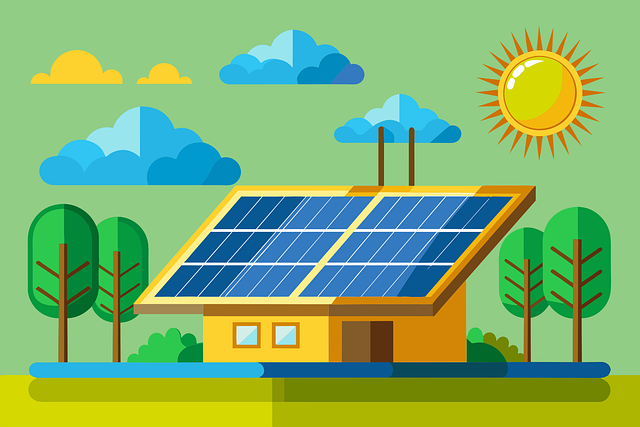“Powering the Future: Uniting Grid Integration and Energy Storage for Sustainable Solutions.”
The integration of renewable energy sources into the electrical grid presents both opportunities and challenges, particularly in terms of reliability and stability. As the share of intermittent energy sources, such as solar and wind, continues to grow, the need for effective energy storage solutions becomes increasingly critical. This exploration delves into the intricate relationship between grid integration and energy storage, highlighting how advanced storage technologies can enhance grid resilience, facilitate the smooth incorporation of renewables, and optimize energy management. By examining various storage systems, their operational dynamics, and their role in balancing supply and demand, this analysis aims to illuminate the pathways toward a more sustainable and efficient energy future.
Grid Integration Challenges and Energy Storage Solutions
The integration of renewable energy sources into the existing power grid presents a myriad of challenges, particularly in terms of reliability, stability, and efficiency. As the world increasingly shifts towards sustainable energy solutions, the need for effective grid integration becomes paramount. One of the most significant hurdles in this transition is the intermittent nature of renewable energy sources, such as solar and wind. These sources do not produce energy consistently; for instance, solar panels generate electricity only during daylight hours, while wind turbines depend on favorable weather conditions. This variability can lead to mismatches between energy supply and demand, resulting in potential grid instability.
To address these challenges, energy storage solutions have emerged as a critical component in facilitating grid integration. Energy storage systems, such as batteries, pumped hydro storage, and flywheels, can capture excess energy generated during peak production times and release it when demand surges or generation falls short. This capability not only enhances the reliability of the power supply but also allows for a more flexible and responsive grid. For example, during sunny or windy days, when renewable energy generation is high, energy storage systems can store surplus electricity, thereby preventing waste and ensuring that this energy is available for use during periods of low generation.
Moreover, energy storage technologies can help mitigate the effects of grid congestion, which occurs when the demand for electricity exceeds the capacity of the transmission infrastructure. By strategically deploying energy storage systems at various points within the grid, operators can alleviate pressure on transmission lines and improve overall system efficiency. This is particularly important in regions where renewable energy generation is concentrated, as localized energy storage can help balance supply and demand without necessitating extensive upgrades to existing infrastructure.
In addition to enhancing grid reliability and efficiency, energy storage solutions also play a vital role in enabling the integration of distributed energy resources (DERs). As more consumers adopt solar panels and other renewable technologies, the grid must adapt to accommodate these decentralized energy sources. Energy storage systems can facilitate this transition by providing a buffer that allows for smoother integration of DERs into the grid. For instance, when a household generates excess solar energy, it can be stored for later use or fed back into the grid, thereby contributing to a more resilient and decentralized energy system.
Furthermore, advancements in energy storage technology are driving down costs and improving performance, making these solutions increasingly accessible for both utility-scale and residential applications. As battery technologies continue to evolve, the potential for large-scale deployment of energy storage systems becomes more feasible, paving the way for a more sustainable energy future. This trend is further supported by policy initiatives and incentives aimed at promoting energy storage adoption, which can help accelerate the transition to a cleaner energy landscape.
In conclusion, the relationship between grid integration and energy storage is one of mutual reinforcement. As the challenges of integrating renewable energy sources into the grid become more pronounced, energy storage solutions offer a viable pathway to enhance reliability, efficiency, and flexibility. By addressing issues such as intermittency and grid congestion, energy storage not only supports the current energy landscape but also lays the groundwork for a more sustainable and resilient future. As technology continues to advance and costs decline, the role of energy storage in facilitating effective grid integration will undoubtedly become even more critical.
The Role of Energy Storage in Enhancing Grid Stability

As the demand for renewable energy sources continues to rise, the integration of these resources into the existing power grid has become increasingly critical. One of the most significant challenges associated with this integration is maintaining grid stability, which is where energy storage systems play a pivotal role. Energy storage technologies, such as batteries, pumped hydro storage, and flywheels, provide a means to balance supply and demand, thereby enhancing the reliability and resilience of the grid.
To begin with, energy storage systems can absorb excess energy generated during periods of high production, particularly from renewable sources like solar and wind. For instance, during sunny or windy days, solar panels and wind turbines can produce more electricity than is immediately needed. Without a mechanism to store this surplus energy, the grid risks becoming overloaded, which can lead to power outages or damage to infrastructure. By capturing this excess energy, storage systems ensure that it can be dispatched later when demand peaks, thus smoothing out the fluctuations inherent in renewable energy generation.
Moreover, energy storage contributes to frequency regulation, a critical aspect of grid stability. The electrical grid operates within a narrow frequency range, and any significant deviation can lead to instability. Energy storage systems can respond rapidly to changes in demand or supply, injecting or absorbing power as needed to maintain the desired frequency. This capability is particularly valuable in a grid increasingly reliant on variable renewable energy sources, which can introduce significant fluctuations in power generation. By providing this ancillary service, energy storage not only enhances grid stability but also supports the integration of more renewable energy into the system.
In addition to frequency regulation, energy storage systems can also provide backup power during outages. In the event of a sudden loss of generation or a failure in transmission lines, energy storage can act as a buffer, supplying power until other generation sources can be brought online or until the issue is resolved. This capability is especially important in regions prone to extreme weather events or other disruptions, where grid resilience is paramount. By ensuring that critical infrastructure remains powered during emergencies, energy storage systems enhance overall grid reliability.
Furthermore, the economic benefits of energy storage cannot be overlooked. By reducing the need for peaking power plants, which are typically more expensive to operate, energy storage can lower overall energy costs. These systems can also defer investments in grid infrastructure by alleviating congestion and reducing the need for upgrades to transmission lines. As a result, energy storage not only supports grid stability but also contributes to a more cost-effective energy system.
As we look to the future, the role of energy storage in enhancing grid stability will only become more pronounced. With advancements in technology and decreasing costs, energy storage systems are poised to become a cornerstone of modern energy infrastructure. Policymakers and grid operators must recognize the importance of these systems and create supportive regulatory frameworks that encourage their deployment. By doing so, we can ensure a more stable, reliable, and sustainable energy future, where the integration of renewable resources is seamless and efficient.
In conclusion, energy storage systems are essential for enhancing grid stability in an era of increasing reliance on renewable energy. By balancing supply and demand, providing frequency regulation, offering backup power, and delivering economic benefits, these technologies play a crucial role in creating a resilient and efficient power grid. As we continue to navigate the complexities of energy transition, the integration of energy storage will be vital in achieving a sustainable energy landscape.
Case Studies: Successful Grid Integration with Energy Storage
The integration of energy storage systems into the electrical grid has emerged as a pivotal strategy for enhancing grid reliability and efficiency. Numerous case studies around the world illustrate the successful marriage of grid integration and energy storage, showcasing how these systems can address the challenges posed by renewable energy sources and fluctuating demand. One notable example is the Hornsdale Power Reserve in South Australia, which has become a benchmark for energy storage projects globally. This facility, equipped with Tesla’s lithium-ion battery technology, has demonstrated the ability to provide rapid response to grid disturbances, effectively stabilizing the grid during peak demand periods and unexpected outages. By offering ancillary services such as frequency control, the Hornsdale Power Reserve has not only improved grid reliability but has also significantly reduced the need for fossil fuel-based peaking power plants.
Transitioning to the United States, the deployment of energy storage systems in California has further exemplified the benefits of grid integration. The state has implemented various pilot projects, including the deployment of large-scale battery storage systems in conjunction with solar farms. These projects have shown that energy storage can effectively mitigate the intermittency of solar power, allowing excess energy generated during the day to be stored and dispatched during the evening when demand peaks. The success of these initiatives has led to regulatory changes that encourage further investment in energy storage, ultimately supporting California’s ambitious renewable energy goals.
In Europe, the integration of energy storage has also gained momentum, particularly in Germany, where the Energiewende initiative aims to transition to a more sustainable energy system. The combination of wind and solar energy with energy storage solutions has proven effective in balancing supply and demand. For instance, the deployment of grid-scale battery systems alongside wind farms has enabled operators to store excess energy generated during windy periods and release it during low production times. This approach not only enhances grid stability but also maximizes the utilization of renewable resources, thereby reducing reliance on conventional power plants.
Moreover, the case of the UK’s National Grid illustrates how energy storage can play a crucial role in managing grid dynamics. The National Grid has invested in various energy storage technologies, including pumped hydro storage and battery systems, to address the challenges posed by increasing renewable energy penetration. By leveraging these storage solutions, the National Grid has been able to smooth out fluctuations in energy supply and demand, ensuring a consistent and reliable power supply for consumers. This proactive approach has not only improved grid resilience but has also facilitated the integration of a higher percentage of renewables into the energy mix.
As these case studies demonstrate, the relationship between grid integration and energy storage is not merely theoretical; it is a practical reality that is reshaping the energy landscape. The successful implementation of energy storage systems has proven to be a game-changer, enabling grid operators to enhance reliability, reduce costs, and support the transition to a low-carbon future. As technology continues to advance and costs decline, the potential for further integration of energy storage into the grid will only increase, paving the way for a more sustainable and resilient energy system. In conclusion, the experiences from various regions underscore the importance of energy storage in achieving effective grid integration, highlighting its role as a cornerstone of modern energy infrastructure.
Future Trends in Energy Storage and Grid Integration Technologies
As the world increasingly shifts towards renewable energy sources, the relationship between grid integration and energy storage technologies is becoming more critical than ever. The future of energy systems hinges on the ability to effectively manage the intermittent nature of renewable resources such as solar and wind. This necessitates advancements in energy storage solutions that can seamlessly integrate with existing grid infrastructures. As we look ahead, several trends are emerging that will shape the landscape of energy storage and grid integration technologies.
One of the most significant trends is the growing adoption of battery energy storage systems (BESS). These systems, particularly lithium-ion batteries, have seen substantial cost reductions and efficiency improvements over the past decade. As a result, they are increasingly being deployed not only for residential use but also for large-scale applications. This trend is expected to continue, driven by the need for grid stability and the ability to store excess energy generated during peak production times. By providing a buffer against fluctuations in energy supply and demand, BESS can enhance grid reliability and facilitate the integration of more renewable energy sources.
In addition to battery storage, other innovative technologies are emerging to complement grid integration efforts. For instance, pumped hydro storage, which has been a stalwart in energy storage for decades, is being revitalized with new projects that utilize advanced materials and techniques to improve efficiency. Similarly, thermal energy storage systems, which store energy in the form of heat, are gaining traction as a viable option for balancing supply and demand. These systems can be particularly effective in industrial applications, where excess heat can be captured and utilized later, thereby reducing reliance on fossil fuels.
Moreover, the rise of decentralized energy systems is transforming the traditional energy landscape. With the proliferation of distributed energy resources (DERs) such as rooftop solar panels and small wind turbines, the need for effective grid integration becomes paramount. Energy storage technologies play a crucial role in this context, enabling consumers to store energy generated on-site and use it when needed. This not only enhances energy independence but also alleviates pressure on the central grid, allowing for a more resilient and flexible energy system.
As we move forward, the integration of artificial intelligence (AI) and machine learning into energy storage and grid management systems is poised to revolutionize the sector. These technologies can optimize energy storage operations by predicting demand patterns and adjusting storage strategies accordingly. For instance, AI algorithms can analyze historical data to forecast energy consumption trends, enabling more efficient charging and discharging of storage systems. This level of sophistication will be essential for managing increasingly complex energy networks that incorporate a diverse array of generation sources and storage solutions.
Furthermore, regulatory frameworks are evolving to support the integration of energy storage technologies into the grid. Policymakers are recognizing the importance of creating incentives for energy storage deployment, as well as establishing standards that facilitate interoperability between different systems. As these frameworks mature, they will help to accelerate the adoption of energy storage solutions, ultimately leading to a more sustainable and resilient energy future.
In conclusion, the relationship between grid integration and energy storage technologies is set to evolve significantly in the coming years. With advancements in battery technology, the emergence of innovative storage solutions, the rise of decentralized energy systems, and the integration of AI, the future holds great promise for creating a more efficient and reliable energy landscape. As these trends continue to unfold, they will play a pivotal role in shaping the transition towards a cleaner and more sustainable energy system.
Q&A
1. **Question:** What is the primary benefit of integrating energy storage with grid systems?
**Answer:** The primary benefit is to enhance grid stability and reliability by balancing supply and demand, allowing for the storage of excess energy during low demand and its release during peak demand.
2. **Question:** How does energy storage contribute to renewable energy integration?
**Answer:** Energy storage systems can store intermittent renewable energy (like solar and wind) when production exceeds demand, ensuring a consistent energy supply even when generation is low.
3. **Question:** What are the challenges of grid integration with energy storage?
**Answer:** Challenges include high initial costs, regulatory barriers, limited grid infrastructure, and the need for advanced management systems to optimize the use of stored energy.
4. **Question:** How can energy storage improve grid resilience?
**Answer:** Energy storage can provide backup power during outages, support frequency regulation, and help manage load fluctuations, thereby enhancing the overall resilience of the grid against disruptions.
Conclusion
The exploration of the relationship between grid integration and energy storage reveals that effective energy storage solutions are crucial for enhancing grid stability, reliability, and efficiency. By enabling the management of supply and demand fluctuations, energy storage systems facilitate the incorporation of renewable energy sources, mitigate the impacts of intermittency, and support peak load management. Ultimately, a synergistic approach to grid integration and energy storage is essential for advancing sustainable energy systems and achieving decarbonization goals.




